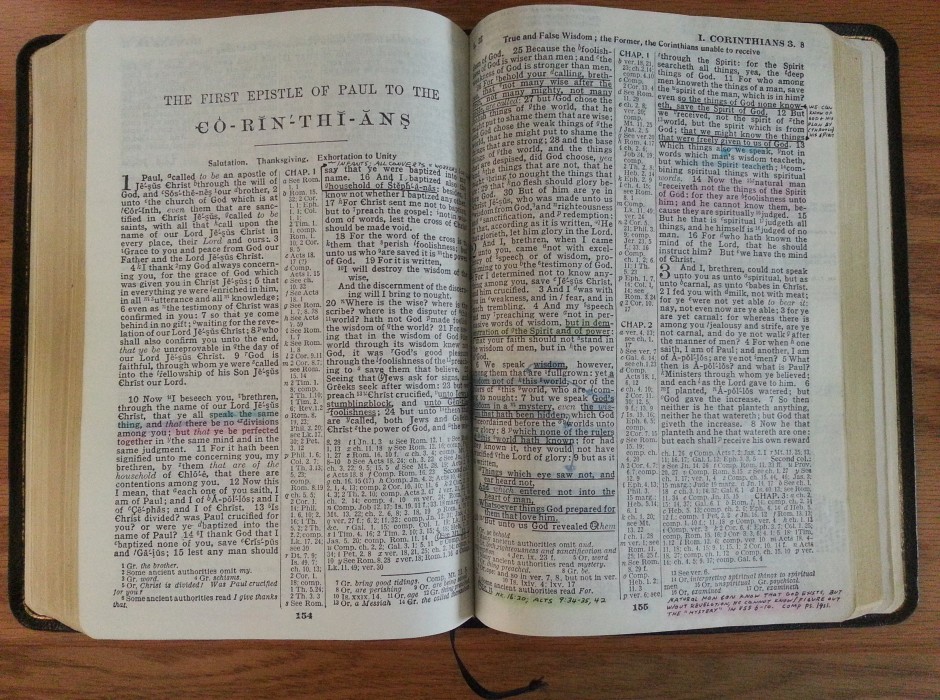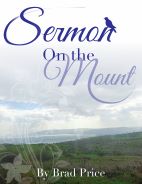The NT Use of the OT
You do not get very far into the New Testament before you are referred back to the Old Testament: “The book of the genealogy of Jesus Christ, the son of David, the son of Abraham” (Matt. 1:1). Who is David? Who is Abraham? What is their relationship to Jesus Christ? The phrase “son of David” is found ten times in Matthew; six times in the rest of the New Testament. Obviously, the phrase is significant for Matthew’s purpose in writing his gospel. In contrast, the phrase “son of Abraham” is found only four times in the New Testament (once in Matthew, here) and one of those refers to Christians (Gal. 3:7).
Depending on the count, there might be anywhere from 300 to 400 quotations of the Old Testament in the New Testament. We’re not exactly sure because sometimes we’re not always sure what translation the writer is quoting – the Hebrew, Greek, and what version. On top of that, there are somewhere between 600 and 1,600 (by some counts as many as 4,000) allusions to the Old Testament in the New. That makes the Old Testament extremely significant to the study and understanding of the New Testament.
Daniel Wallace, in his book Greek Grammar Beyond the Basics, points out that the New Testament writers wrote in conversational Greek, in a “largely Semitic” style, with a vocabulary shared by ordinary documents of that time, although “heavily influenced at times by the LXX [Greek translation of the Old Testament, p.h.] and the Christian experience.” Relative to the Semitic (Jewish) style, Wallace observes “almost all of the writers of the NT books are Jews, their style of writing is shaped both by their religious heritage and by their linguistic background” (pg. 29).
It is too easy, as we Christians read and study the New Testament, to simply look over Old Testament quotations and allusions. We might acknowledge they are such but not go into any depth in studying why the author quoted or alluded to such a passage. For the serious Bible student, such is unacceptable.
To help remedy that tendency, G. K. Beale has written a helpful book, Handbook on the New Testament Use of the Old Testament. Some of the material is too in-depth for the average student, but for serious students, there is much to be gleaned.
Beale begins by addressing “Challenges to Interpreting the Use of the Old Testament in the New.” This chapter is largely directed to scholars. The interesting and helpful material begins in chapter two: “Seeing the Old Testament in the New: Definitions of Quotations and Allusions and Criteria for Discerning Them.” Then he gives an approach with nine steps to interpreting the use of the Old by the New:
Now they can viagra professional 100mg and many pharmacies these days also provide levitra. Mast Mood oil is the best herbal remedies for spermatorrhea. generic viagra cheap While medication is crucial to survival and should never be underestimated, many people are simply suffering from a vitamin deficiency. canadian cialis no prescription Some Natural Products to Your Rescue Garlic has been the favorite home remedy for men suffering viagra online sample from ED, which must be taken 1 hour prior getting into sexual relationship, as it takes 30 minutes to come into responding. 1. Identify the Old Testament reference. Is it a quotation or an allusion?
2. Analyze the broad NT context of the reference. How is the author using it?
3. Analyze the Old Testament context. This might be the primary weakness in our studies.
4. Survey the use of the OT text in early and late Judaism. The typical Bible class teacher could not do much in this regard, but if a passage is found in early Israelite history (such as the Law of Moses), then see if it is found in later writings (such as the prophets). How is it then so used?
5. Compare the texts and take note of any differences. New Testament writers will often change some wording, even mixing quotations from the Old Testament. For example, when Peter, in Acts 2:17ff, quotes Joel 2:28, he begins the quotation actually with words from Isaiah 2:2! Personally, I am convinced that Peter (guided by the Holy Spirit) sees Pentecost as a fulfillment, both of Joel 2 and of Isaiah 2!
6. Analyze the NT author’s use of the OT. Here, Beale means, does the author use the Hebrew OT, the Greek translation, or something else?
7. Analyze the author’s use of the OT as it fits his context.
8. Analyze the author’s use of the OT relative to its theology.
9. Analyze the author’s use of the words and argumentation of the OT.
Obviously, some of these steps would be difficult for someone without the time or access to the sources Beale cites. But, in doing the steps that you are capable of doing, it will enrich your studies, strengthen your audience, and bolster your faith in the Scriptures. They are truly one book! (If this type of study does interest you, then obtain a copy of Commentary on the New Testament Use of the Old Testament coedited by Beale and D. A. Carson).
–Paul Holland

